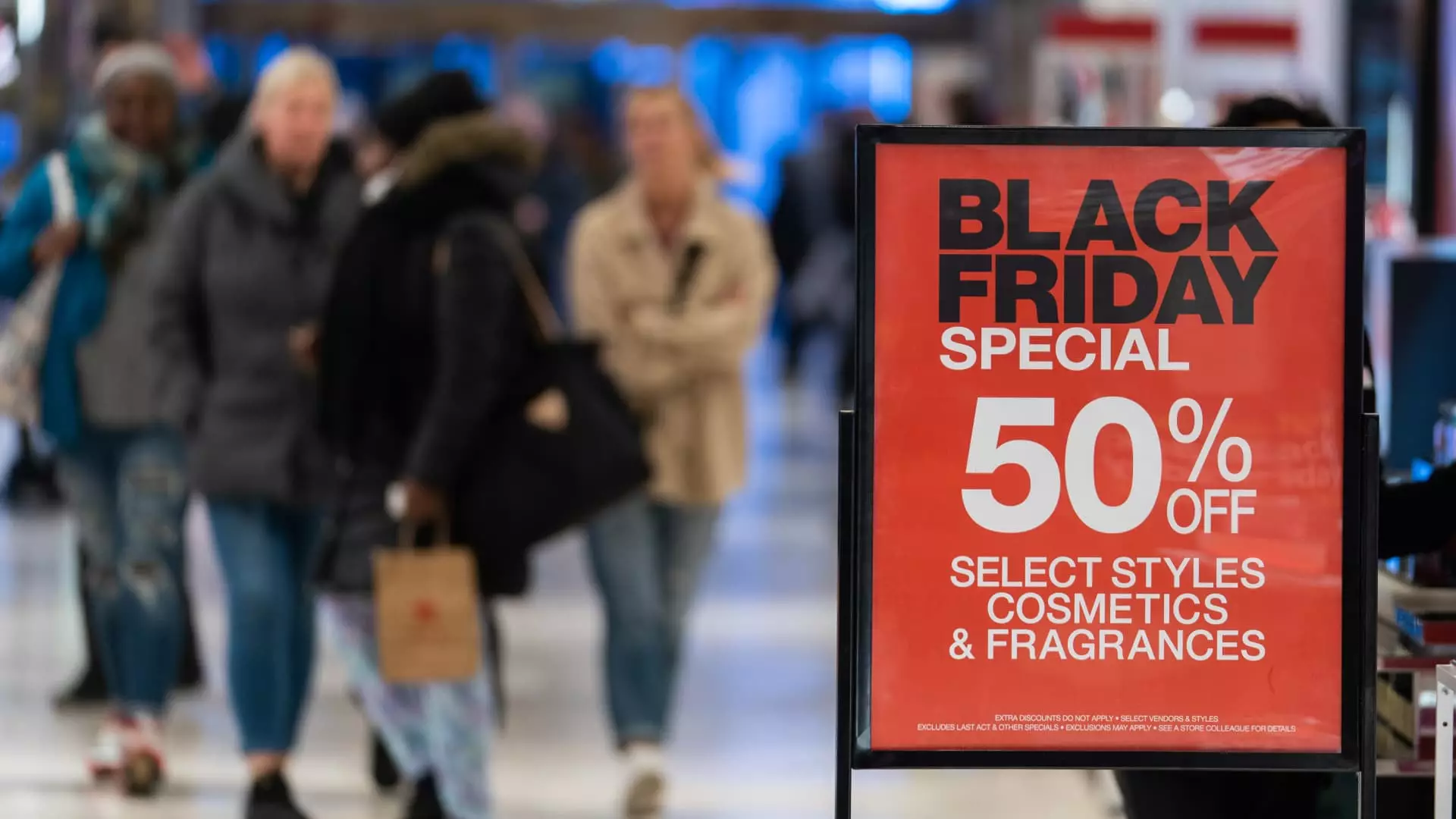Every year, the five-day stretch from Thanksgiving to Cyber Monday witnesses a surge in consumer spending, often touted as the busiest shopping period of the year. This year promises to be no exception, with the National Retail Federation projecting a record number of shoppers both in-store and online. However, amidst the chaos and deals, there lies a noteworthy undercurrent: a significant number of Black Friday sales may not actually represent the best possible prices for consumers.
Recent analysis by WalletHub highlights a concerning truth: around 35% of products available on Black Friday at leading retailers do not showcase any actual savings when compared to their pre-sale prices. This unexpected revelation indicates how savvy consumers need to be when navigating the promotional noise surrounding the holiday season. Retailers often play a clever game of pricing, inflating “original” prices to give the illusion of dramatic discounts. Andrea Woroch, a consumer savings expert, notes this deception and urges shoppers to remain vigilant, emphasizing that some of the anticipated “deals” may be less beneficial than they appear.
One of the driving factors behind the misleading pricing tactics is the evolving retail landscape. Adam Davis, managing director at Wells Fargo Retail Finance, comments on the recent trend of retailers extending promotional periods to capture consumer attention. The traditional Black Friday frenzy is “watered down” as companies strive to maximize sales opportunities, especially given that the period between Thanksgiving and Christmas will be significantly shorter in 2024.
In light of these changes, early bird shopping has transformed from a preferential choice to a necessary action. This year, consumers may feel compelled to make their purchases earlier than ever before due to anxiety surrounding shipping delays. As articulated by Patrick Kelleher from DHL Supply Chain, the logistics infrastructure faces increasing pressure, further compounded by a persisting workforce shortage. As we have transitioned into a culture of instantaneous gratification, this shift reminds us of the vulnerability inherent in our supply chains.
Consumers have grown accustomed to convenience, often overlooking the potential drawbacks associated with online purchasing. With higher volumes of packages expected due to increased shopping, the likelihood of delayed deliveries escalates. Coupled with potential risks such as damaged or lost items, the urgency to shop early is echoed by insights from marketing professor Lauren Beitelspacher. The chain reaction of shipping challenges also gives rise to concerns around “porch piracy” — a growing crime where stolen packages are taken from doorsteps.
Davis points out that shoppers might see discounts ranging from 20% to 30%, but these offers are not guaranteed across all products. Premium brands, such as Nike and Lululemon, are likely to maintain their pricing strategy, opting for minimal markdowns to preserve brand integrity. As consumers become increasingly budget-conscious, retailers are expected to entice them with creative incentives, including rewards programs and free gift cards, aiming to drive sales while accommodating shoppers’ desire for value.
Despite widespread misinformation about Black Friday, certain categories still shine during the sales rush. Practical seasonal items like winter clothing and electronics often feature substantial markdowns. Interestingly, beauty products and footwear perform better during the following Cyber Monday, emphasizing the need for strategy in timing purchases effectively. Shoppers with travel plans can benefit greatly from “Travel Tuesday,” showcasing deals on flights and accommodations.
Historically, categories like toys and holiday decorations become more appealing as Christmas approaches. In contrast, larger item categories such as exercise equipment and furniture see better pricing during specific holiday weekends throughout the year. Therefore, timing is essential, making price-tracking tools and applications beneficial for savvy consumers. A single oversight in purchase timing could lead to missed opportunities for greater savings.
In this digitally driven age, consumers have the advantage of employing various tools to maximize savings. Browser extensions such as Honey and Camelizer can track price fluctuations, notifying users of drops and directing them to available coupon codes. For in-person shopping, mobile applications like ShopSavvy allow for immediate price comparison, ensuring that shoppers are harnessing the best value from multiple sources.
Additionally, savvy shoppers can combine discounts from various credit cards with reward programs and cashback sites to further enhance savings. The use of particular mobile apps allows for further benefits, transforming receipts into redeemable points for significant discounts. Understanding price adjustment policies can be pivotal; some retailers permit price modifications if purchased items drop shortly after sale—a great way to reclaim cash in this shopping frenzy.
As we approach this holiday shopping season, the key takeaway remains: be informed, shop wisely, and don’t let the excitement of Black Friday overshadow the need for a strategic approach to spending. With awareness and planning, shoppers can navigate the pitfalls of holiday sales and emerge with the best deals possible.

